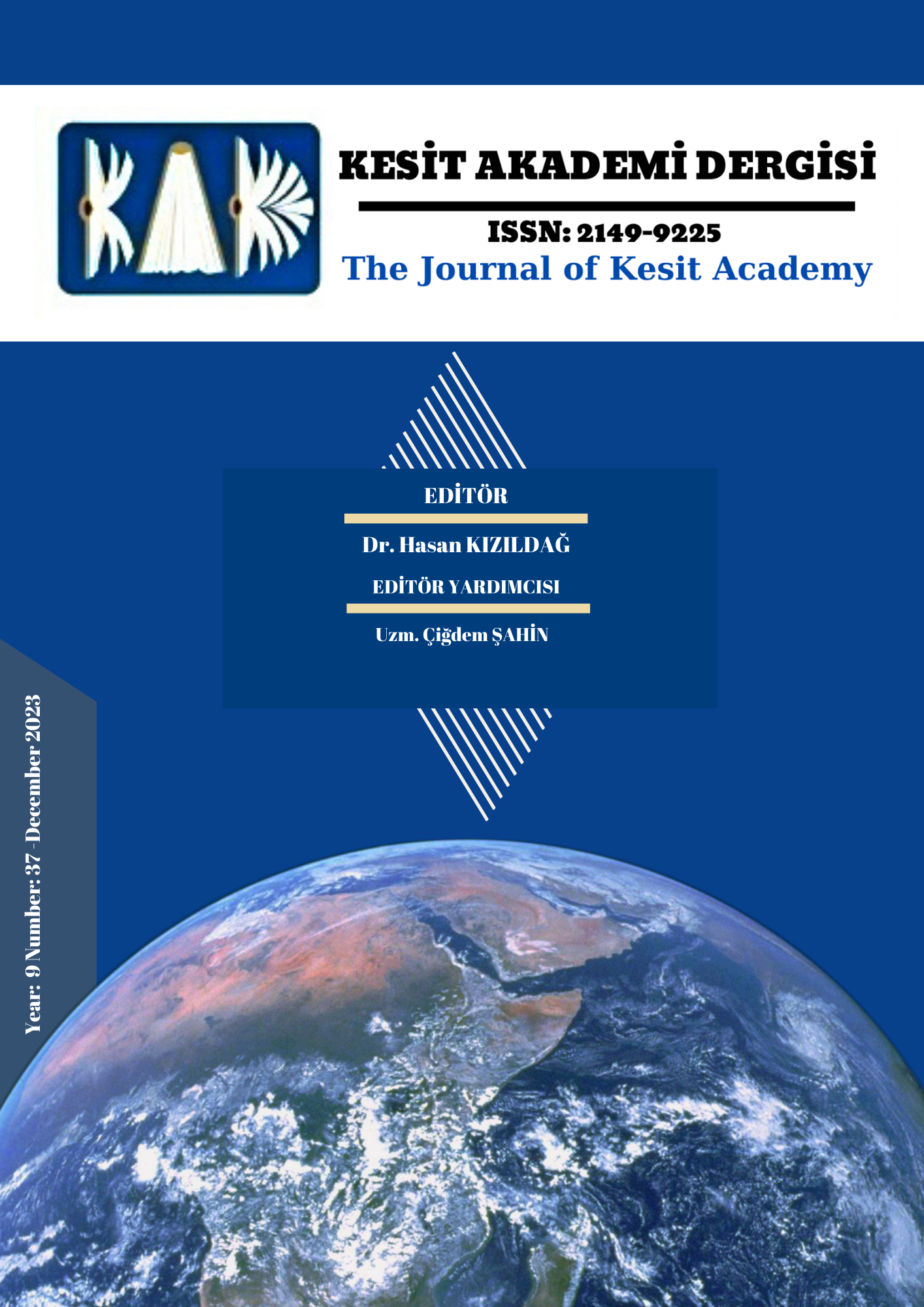Author :
Abstract
Bir yere özgü olma durumu; 20. yüzyılın başlarında Marcel Duchamp ve Kurt Schwitters'e dayandırılabilecek yerleştirmeyle dirsek teması olan ve birçok sanat disiplinini içinde barındıran, hibrit üretim tarzıyla tarif edilebilir. Uygulamayı, üretim süreçlerini içinde barındıran ve sergileyen sanatsal üretim biçimlerinin sanat dünyasında etkin oluşu 1960’ları bulur. İkinci Dünya Savaşı sonrasında 1950’lerden itibaren kendini iyice hissettiren kapitalizm, etkisini sanat dünyasında da göstermiştir. Galeri, müze gibi kurumsal yapılar, sanat nesnesinin ticari meta haline gelmesinde başat rol oynamış, adeta sergiledikleri eserleri ve sanatçıların sanat hayatını biçimlendirecek kadar etkin olmuşlardır! Kısaca Arazi Sanatı, bu duruma bir tepki olarak doğmuştur diyebiliriz. Arazi sanatçılarının çalışmalarını doğrudan doğa içinde gerçekleştirmeleri, onların muhalif yanlarını da ortaya çıkarmaktadır. Aynı zamanda heykelin geleneksel durumuna da bir sorgulamadır ve bunu alana özgü (site- specific) ürünlerle göstermişlerdir. Bu bakışla Arazi Sanatı 1960’ların sanat dünyasında vuku bulan anti sanat hareketlerinde öncü sayılabilir. Dönemin kurumsallaşmış sanat dünyasına bir tavır olarak sayılabilecek bu akım; anti kapitalizm, öğrenci hareketleri, savaş karşıtlığı gibi toplumsal olaylardaki muhalif hislerle de paralellik gösterir. İzleyicinin yapıtı bir kenarda izlemeden, hatta yapıtla iletişimi doğrudan kurduğu bir deneyim alanı olarak sunulan arazi sanatı yapıtları; galeri sınırlarını reddederek devrimci ruhunu ortaya koyduysa da bu durum uzun sürmez. Sanatın müze ve galeri gibi kurumsal yapıları, yeni hatta karşıt fikirlerin dahi ehlîleştirilip pazarlandığı esnek bir ticari ortamı içerir. Bir kariyer inşası olarak görülebilecek sanat piyasasına arazi sanatçıları da teslim olmuş, başlangıçta müze ve galeri salonlarının dışında yapıtlarını sunsalar da zamanla sisteme tabi olup hem arazide hem de galeride sanat üretmişlerdir. Amerikalı arazi sanatçılarına göre daha hafif müdahalelerde bulunan Richard Long da üretimlerini hem arazide hem de galeride sürdürmüştür. Bu metin sanatın kurumsal işleyişini, Arazi Sanatında tutarsız gibi görünen iç mekân kullanımını sanatçı Richard Long özelinden hareketle açıklamayı amaçlar.
Keywords
Abstract
Site-specificity can be described as a hybrid mode of production that includes many art disciplines and is in elbow contact with installation, which can be traced back to Marcel Duchamp and Kurt Schwitters in the early 20th century. It is only in the 1960s that forms of artistic production that incorporate and exhibit practice and production processes become active in the art world. After the Second World War, capitalism, which made itself felt from the 1950s onwards, also showed its influence in the art world. Institutional structures such as galleries and museums played a leading role in the transformation of the art object into a commercial commodity, and were active enough to shape the works and the artistic life of the artists! In short, we can say that Land Art was born as a reaction to this situation. The fact that land artists realize their works directly in nature reveals their oppositional side. It is also a questioning of the traditional status of sculpture and they have shown this with site-specific products. From this point of view, Land Art can be considered a pioneer in the anti-art movements that took place in the art world of the 1960s. This movement, which can be considered as an attitude towards the institutionalized art world of the period, is parallel to the oppositional feelings in social events such as anti-capitalism, student movements and anti-war. Presented as a space of experience where the viewer can directly communicate with the work without watching it from the sidelines, the works of land art revealed their revolutionary spirit by rejecting the boundaries of the gallery, but this situation did not last long. The institutional structures of art, such as museums and galleries, include a flexible commercial environment where new and even opposing ideas are licensed and marketed. Land artists also surrendered to the art market, which can be seen as a career-building process, and although they initially presented their works outside of museums and galleries, in time they became subject to the system and produced art both on the land and in galleries. Richard Long, who made more subtle interventions than the American land artists, continued his production both in the field and in the gallery. This text aims to explain the institutional functioning of art and the seemingly inconsistent use of interior space in Land Art with a special focus on the artist Richard Long.
